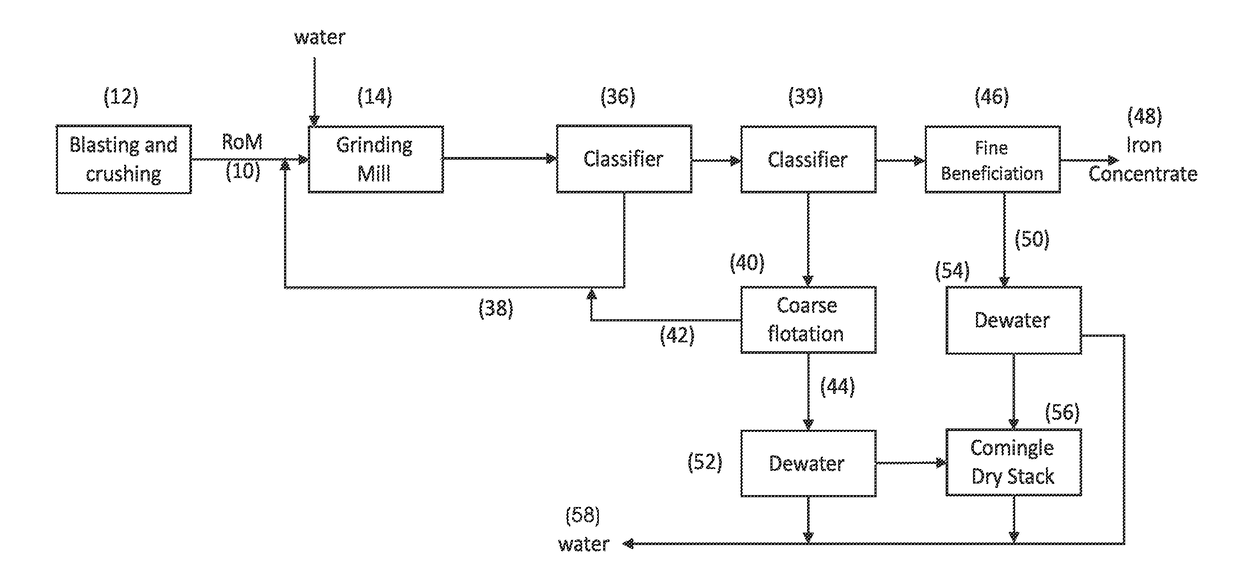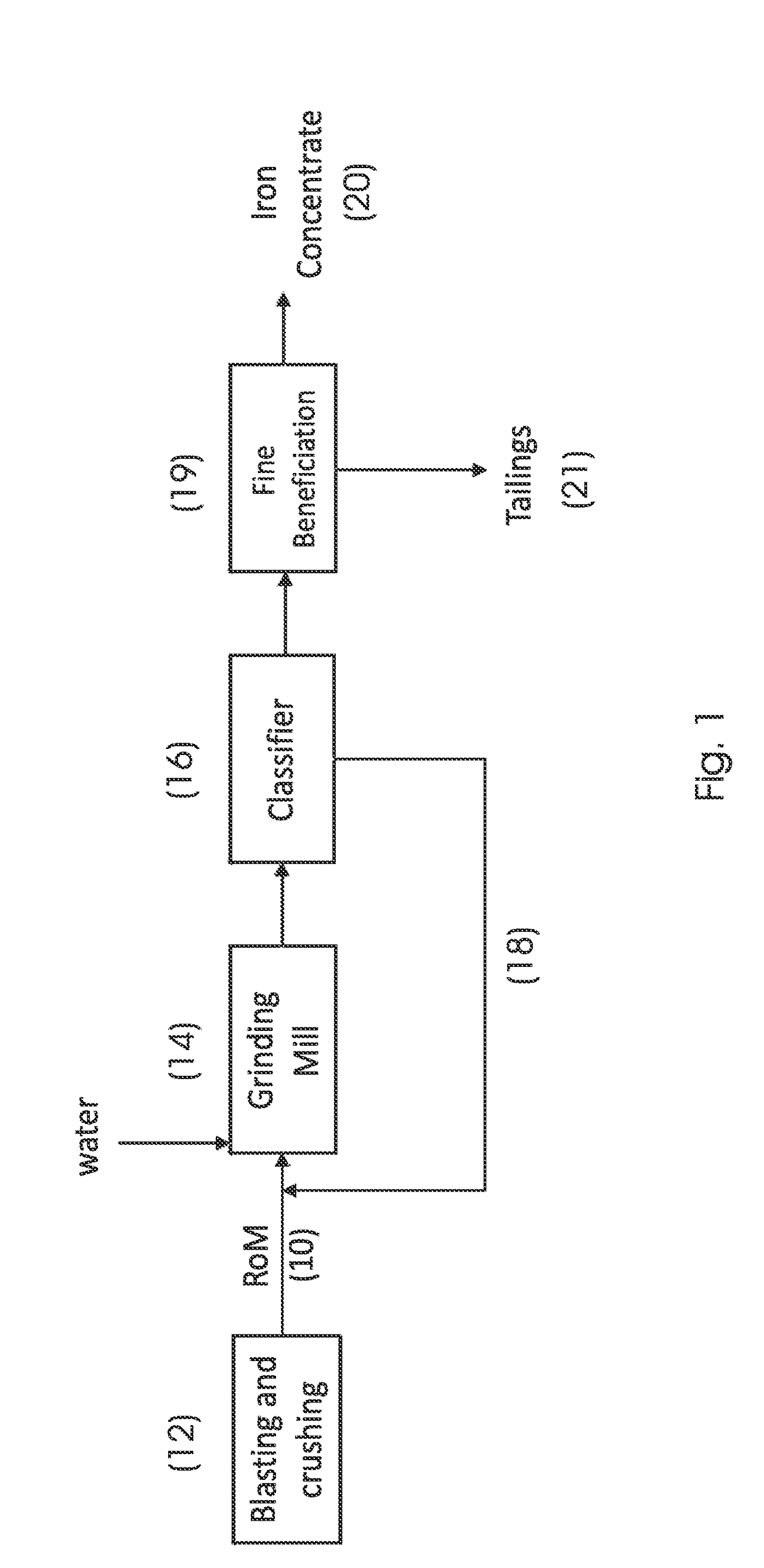Reducing the need for tailings storage dams in the iron ore industry
a technology for tailings and storage dams, which is applied in the direction of magnetic separation, grain treatment, chemistry apparatus and processes, etc., can solve the problems of reducing the efficiency of tailings, and reducing so as to reduce the cost of iron ore production and reduce the cost of tailings generation. , the effect of increasing the throughput capacity
- Summary
- Abstract
- Description
- Claims
- Application Information
AI Technical Summary
Benefits of technology
Problems solved by technology
Method used
Image
Examples
examples
[0067]For a particular banded ironstone resource located in South Africa, the feed to coarse flotation was simulated, for the purposes of demonstrating the core components of the integrated process. The feed grade to coarse flotation contained 41% iron, with the gangue component being mostly silica (35%), with small quantities of alumina (3%) and other impurities. The simulated coarse flotation feed was formed by separating undersize particles (size less than 100 micron) from a typically ground sample of the ore, using a screen to simulate a cyclone and crossflow hydraulic classifier in series. The upper size fraction for coarse flotation simulating the material to be returned to comminution was screened at 450 micron. With such cut sizes, the fine fraction (<100 microns), would typically represent around 50% of the classified material to be beneficiated.
[0068]The undersize (<100 micron) was deemed suitable for fine beneficiation (step e), with more than 90% of the contained hematit...
PUM
| Property | Measurement | Unit |
|---|---|---|
| Fraction | aaaaa | aaaaa |
| Fraction | aaaaa | aaaaa |
| Fraction | aaaaa | aaaaa |
Abstract
Description
Claims
Application Information
 Login to View More
Login to View More - R&D
- Intellectual Property
- Life Sciences
- Materials
- Tech Scout
- Unparalleled Data Quality
- Higher Quality Content
- 60% Fewer Hallucinations
Browse by: Latest US Patents, China's latest patents, Technical Efficacy Thesaurus, Application Domain, Technology Topic, Popular Technical Reports.
© 2025 PatSnap. All rights reserved.Legal|Privacy policy|Modern Slavery Act Transparency Statement|Sitemap|About US| Contact US: help@patsnap.com



